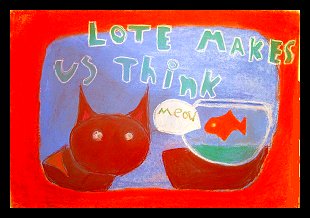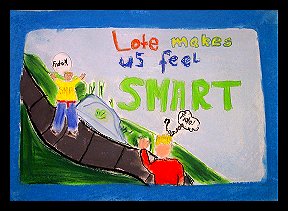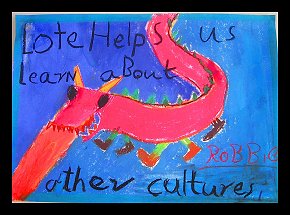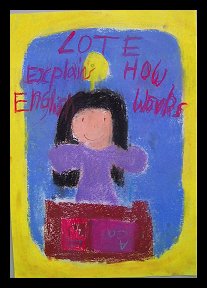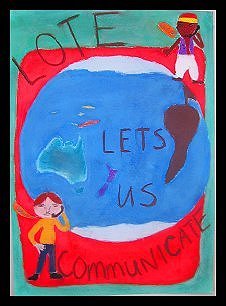 |
|
||||
| | Home | Travel | Aims | Membership | Make Contact | Calendar | Members Page | News | Get Good-Do Good | AEA Projects | LOTE | Links | |||||
|
Q. Why teach Esperanto in Schools? A: Because of the reasons why we are teaching a LOTE at all. These are from the Modern Language Teachers Association website. 1. Communication Esperanto is usually considered to be between 5-7 times quicker to learn than most national languages. Esperanto is completely phonetic. A single, unique letter represents every sound whenever it occurs. There are no
exceptions, silent letters, phonemes, or variations due to position. The emphasis is always on the second-last syllable, which makes correct oral reading possible from the first lesson. The advantage of this is that all students get the chance to organize their ideas, to select appropriate words
and tone, and express their ideas and feelings, in their new language. 2. Better understanding of English The patterns in Esperanto were designed to be easy to see and to use. For example: General Concept: past, present, future English: held, hold(s), will hold caught,
catch(es), will catch fell, fall(s), will fall Esperanto: tenis, tenas, tenos kaptis,
kaptas, kaptos falis, falas, falos Esperanto encourages the habit of looking for patterns because of its extensive
system of prefixes and suffixes, which can be utilized freely and with confidence because there are no exceptions to their
applicability. Since most of the prefixes, suffixes and root words used in Esperanto are derived from Latin or other European languages,
there is a high level of transferable learning involved in Esperanto use. Esperanto is useful for strengthening awareness of grammatical parts of speech as nouns end in –o, adjectives
in –a, adverbs in –e and verbs in –as, –is, -os, -u, or -us,
depending on tense and mood. 3. Social development. Esperanto programs are fully suited to providing social experiences including games, songs, arrangements and introductions. A strong network of Esperanto teachers and classes exists internationally and is ready to introduce children to high
technology long-distance friendships around the globe. 4. Learning about other cultures Over 100 nations have Esperanto associations and smaller groups of speakers live in other countries. This ethnically diverse, culturally aware, multilingual network provides excellent cross-cultural learning opportunities
through books, web-sites, email, letters, CD's and magazines, both paper and on-line, in a full range of styles and subject
matter. A 'virtual school' been established by the International Esperanto Teacher’s Association, in conjunction with UNICEF, and
is being developed further by classes of children from every inhabited continent portraying their own culture in their country’s
‘classroom’. The Esperanto culture itself is over 100 years old. It involves being aware of national and religious differences
and human similarities and encourages friendliness, respect, confidence and fair dealing. 6. Self esteem. Esperanto is the only language intelligently designed for the express purpose of being a quick and successful second
language for everyone. A child’s first contacts with non-English speakers through Esperanto will be with equals. Both parties will
be engaged in the same effort to communicate in a new and challenging way and both can offer and receive help, make mistakes,
laugh it off and try again. 7. Enjoyment and enrichment. Learning any language has potential to be enjoyable. High-quality Esperanto teaching aids include picture books, children’s novels, music CD’s, interactive
technologies and video resources to support a varied programme based on children’s interests and accommodating a range
of aptitudes. 8. Developing skills for the future. Literacy skills, problem-solving skills and general confidence in language learning are likely results of learning
any language. Students learning Esperanto can spend more time in application of understandings to creative tasks, synthesis and
analysis of texts, and evaluation processes because there is less time needed for memorization of idiosyncratic variations. 9. Enhanced vocational prospects Besides teaching and tourism possibilities, Esperanto education enhances vocational prospects by promoting tolerance
of cultural variations and providing intercultural knowledge, confidence, and positive attitudes to language learning. |
These 8 beautiful posters will help your whole school community to understand why L.O. T. E (a language other
than English) is so important, whatever language you are teaching. They can be ordered from Treetops Montessori School for
$40 for the A3 set, fully laminated and ready to hang.
For more great Esperanto Teaching Aids
|
|||
 |
||||
